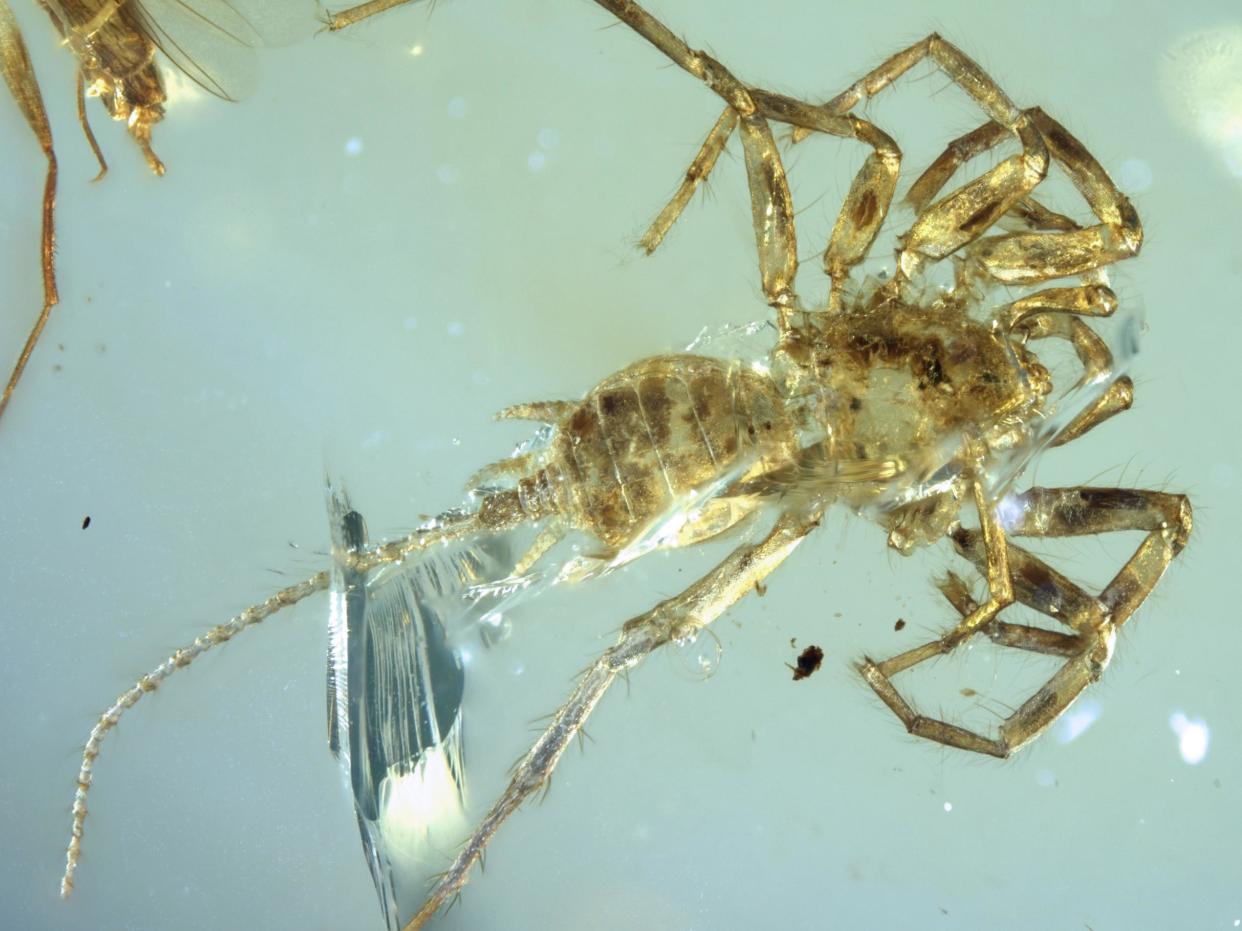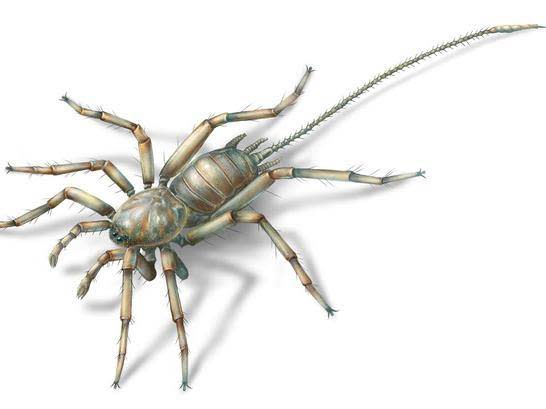Spider-like creature with a tail found preserved in 100 million year old amber

A spider-like creature with a tail has been discovered trapped in amber from Myanmar.
The arachnid – a relative of modern spiders and scorpions – shares many similarities with modern spiders including fangs and spinnerets, which are appendages used to spin silk.
Unusually, this 100 million year-old creature also has a long, tail-like structure known as a flagellum on its rear end.
“Any sort of flagelliform appendage tends to be like an antenna,” said Dr Paul Selden, a palaeontologist at the University of Kansas and one of the authors of the paper describing the creature.
“It’s for sensing the environment. Animals that have a long whippy tail tend to have it for sensory purposes.”
The discovery, described in the journal Nature Ecology and Evolution, has been named Chimerarachne yingi after the chimera of Greek mythology - a monster made up of different animal body parts.
Like its namesake, the spider possesses an array of unusual body parts and this has excited the researchers who described it because it allowed them to piece together the evolutionary history of arachnids.

In the past, those with tails have been found that lacked spinnerets, while modern spiders possess spinnerets but lack tails.
“That’s why the new one is really interesting,” said Dr Selden. “It seems to be an intermediate form. In our analysis, it comes out sort of in between the older one that hadn’t developed the spinneret and modern spider that has lost the tail.”
Though the scientists who described the new species can only speculate as to its behaviour when it lived, its anatomy and the location of the fossil offer them clues.
“Because it was trapped in amber, we assume it was living on or around tree trunks,” said Dr Selden. “Amber is fossilised resin, so for a spider to have become trapped, it may well have lived under bark or in the moss at the foot of a tree.”
As for its web-weaving skills, these would likely have paled in comparison to modern spiders.
“I presume that it didn’t make webs that stretched across bushes,” said Dr Selden. “However, like all spiders it would have been a carnivore and would have eaten insects, I imagine.”
Instead of constructing webs, Chimerarachne may have used its silk for a variety of other purposes, such as constructing underground burrows or wrapping up its eggs.
The creature is the latest find from the amber deposits of Myanmar, which have been the location of many exciting discoveries including perfectly preserved mushrooms and ticks filled with dinosaur blood.

